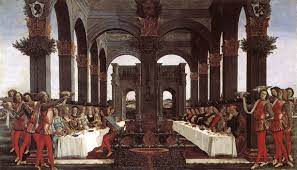BAROQUE DINING FASHIONS
- Susie Barber

- Aug 17, 2023
- 1 min read
Updated: Sep 6, 2023

SERVING "À LA FRANÇAISE"
In the 17th and 18th centuries, nobility dined "à la française." This included many different dishes, served at the same time and arranged according to a set table layout and a holistic Baroque composition. The first course included pate, soups or pickled items. The main course consisted of large roasts, vegetable dishes and sweet dishes. Dessert was fruit, cheese and sweets. Perfumed toothpicks, stems of fennel and mint confections freshened breath after the meal.

FROM HAND TO MOUTH
Eating with a fork and knife is a relatively new custom that did not become established until the 19th century. Even at court, the custom was to eat with fingers. The most important function of the tablecloth was for wiping fingers. This is why the top tablecloth was removed after every course and the fresh tablecloth beneath was used for the next course. The final course could even be served directly on the wood of the table as each dish was served on a lace doily.

Showcase dishes were especially popular during the Baroque period. Live animals would jump out of these dishes, to the court society's amusement.
CAREFUL! COLD AND GREASY
Despite the large number of dishes and the lavish table decor, meals at the Baroque royal table were not always delicious. Dishes were often served lukewarm or cold because the route from the kitchen to the table was so long. Several preheating ovens were situated along the way. Many were so soft-boiled that they could be eaten without teeth. Fricassee and ragout were inventions of the time, as people neglected their teeth and lost them early on.


Comments